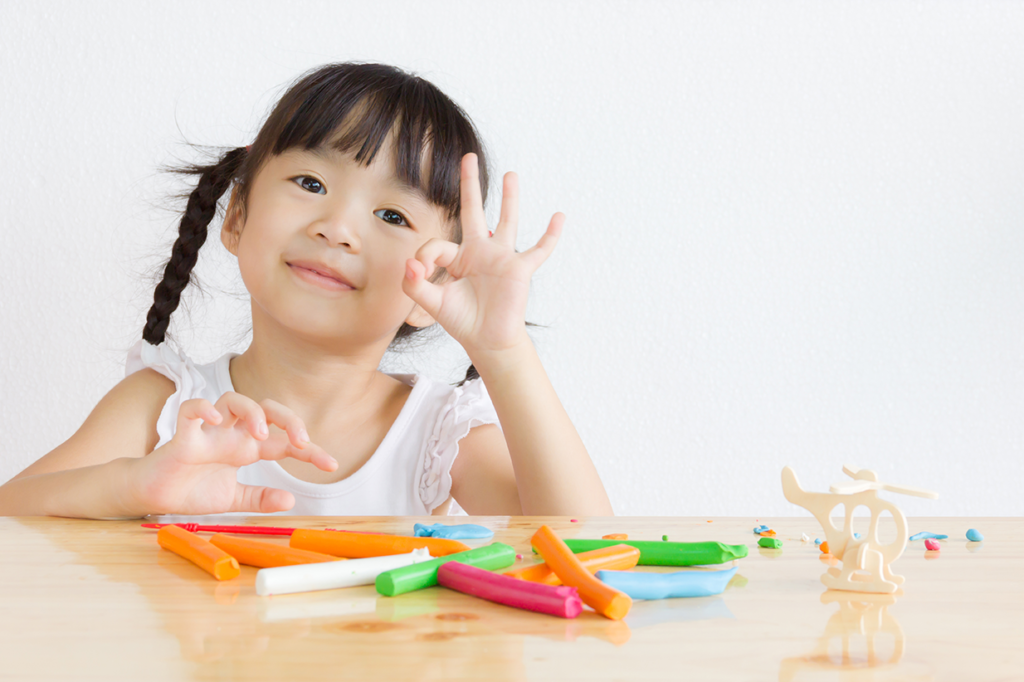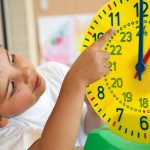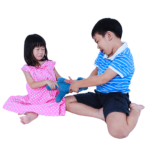 We’re known to be pretty good at Mathematics. In fact, governments from around the world have considered or are already adopting our models of teaching Math and Science to students in their schools. But while this may be something to be proud of on a national level, it also creates more stress for parents… (as if we don’t already have enough).
We’re known to be pretty good at Mathematics. In fact, governments from around the world have considered or are already adopting our models of teaching Math and Science to students in their schools. But while this may be something to be proud of on a national level, it also creates more stress for parents… (as if we don’t already have enough).
How do we help the little ones to keep up in school without becoming tiger mums or dads? Here’re some tips for you to teach Math to your child.
1. Notice shapes around you
Our world is full of shapes, and they are the basis of geometry – although we might have become so used to this that we’ve forgotten it. So, begin teaching your child about shapes from a young age. Easy ways to do this:
Tell them the shape of the phone you’re holding: a rectangle.
Ask, “What is the shape of that window?” They might answer, “A square,” or you can prompt them.
By pointing out shapes in your child’s everyday world, she will begin to recognize those shapes. Also, don’t be afraid of teaching them less common shapes, such as the octagon or hexagon. You can also help them understand the difference between two-dimensional shapes they see on paper or a screen (such as a square and triangle), and three-dimensional shapes they see in real life (such as a cube or a pyramid).
2. Play matching games
Very young children can begin to work on Math skills through basic matching games. You can use a variety of objects or toys in teaching your child to match things up. For instance, place a variety of objects in front of your child. Give him two cups, two blocks, two crayons, and two each of half a dozen other items all in a big pile together. Then, work with your child to put these items in matching sets. As he grows more skilled in this, you can give him more similar items, such as using all crayons and getting him to match them in sets of two.
3. Count everything together
Of course, one of the best ways to help your child begin honing Math skills is by teaching her to count. Count aloud with your child throughout your day at whatever opportunity you get. As an example, when you place several vegetables on your child’s plate at dinner, count them out, saying, “Here are one, two, three carrots for you.” As your child grows familiar with the numbers, you can have her count with you, or wait for her to say the next number in the series that you are counting.
4. Add simple items
Once she’s learnt to count, she can start to add. You can play a simple counting game together with crayons or buttons – anything that is easy for her to handle, and it only takes five minutes or less. With your child sitting at the table across from you, give him two buttons and have him count them. Then, give him one more placed a little away from the other to. Say, “Two plus one makes three.” Next, count them together: “One, two, three.” Continue doing this, adding one button each day: “Three plus one makes four,” and so on. Soon, your child will know how to add ones. Then you can begin teaching him how to add twos with the same game.
5. Multiply in twos
Again, organise coins or some other small items in sets of two and count them with your child. For starters, count up to 10 while touching each set of two: “Two, four, six, eight, ten.” Once your child has memorised this, you can begin teaching her to count by twos up to 20. Teaching your young child to count by twos, fives, and tens (or even by threes and fours) makes it much easier for your child to learn multiplication.
6. Count money together
A great way to teach your child Math skills as well as prepare him for real life money management is by teaching him to count money. Using coins from your wallet or purse, you can teach him how various denominations of coins all equal one dollar. For instance, using a 20-cent coin, count with him, “Twenty, forty, sixty, eighty, and one hundred. Five of these coins equal one hundred cents, or one dollar.” You can repeat the same concept with 10-cent coins.
7. Divide and conquer
You don’t need to wait till primary school to teach him basic division skills too. Take a fruit such as a papaya and then cut it into two even pieces. Say clearly to your child, “Two halves make a whole.” Once your child understands this concept, cut the papaya into four pieces and say, “Four quarters also make a whole.” If you need to, put all the slices together so he can see it for himself.
8. Measure and weigh
A fun way your child can begin to understand weights and measurements is by letting him help you in the kitchen. If you need to measure rice, get him to weigh and scoop out what you need. He’ll not only naturally begin to learn Math, he’ll also feel like he’s being useful.
Make the most of the Math present in everyday activities to teach your preschooler. And as you tune in to the Math learning possibilities in daily family life, she will appreciate that Math is everywhere – and relevant. But as with any new concept, make sure she understands it clearly, and grasps the simple logic behind it. This way, learning will not only be easy, but fun.






















